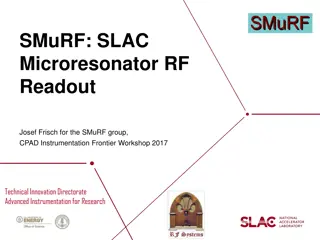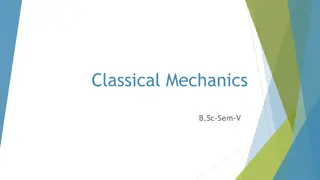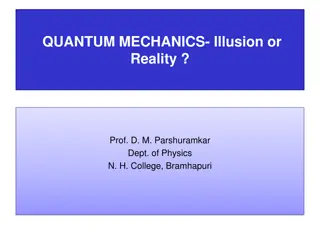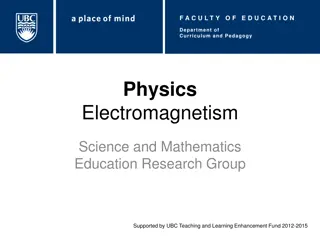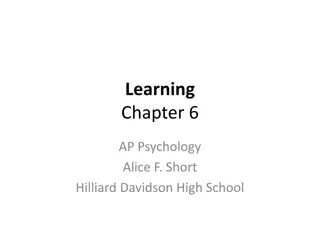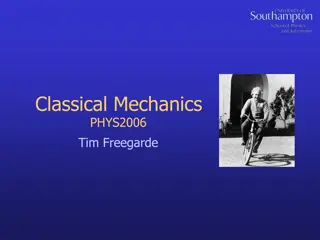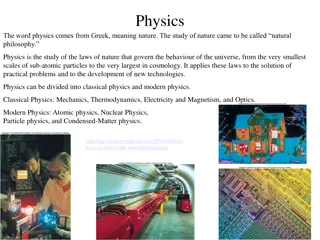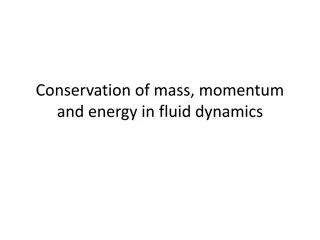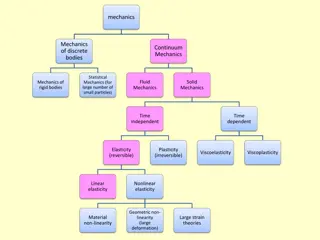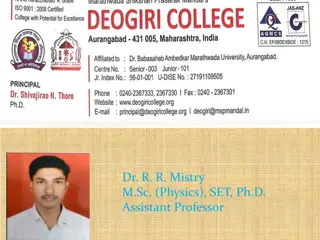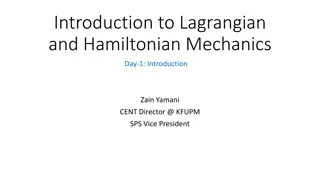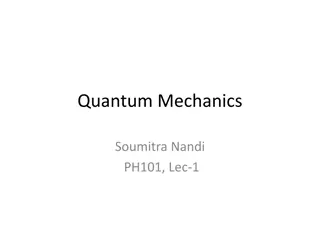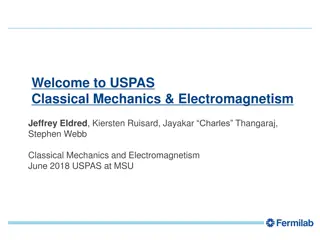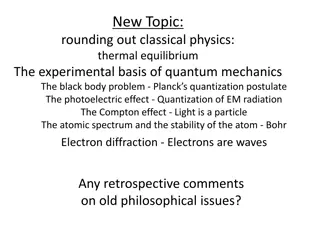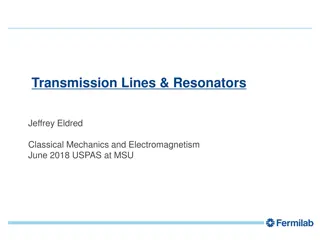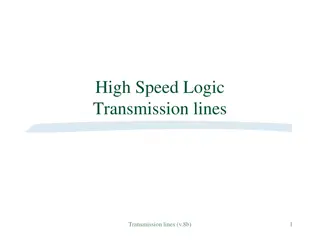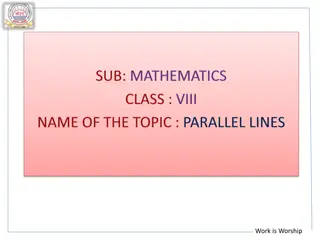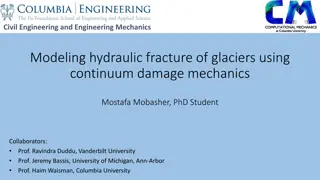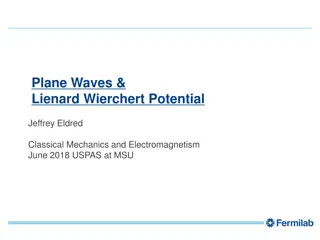Classical Mechanics and Electromagnetism: Transmission Lines & Resonators
In this June 2018 USPAS session at MSU, delve into concepts like lumped circuit models, characteristic impedance, phase velocity, voltage reflection coefficients, standing wave ratios, and more related to transmission lines and resonators. Explore the frequency dependence, power transmission, and reflection coefficients in detail.
Download Presentation

Please find below an Image/Link to download the presentation.
The content on the website is provided AS IS for your information and personal use only. It may not be sold, licensed, or shared on other websites without obtaining consent from the author.If you encounter any issues during the download, it is possible that the publisher has removed the file from their server.
You are allowed to download the files provided on this website for personal or commercial use, subject to the condition that they are used lawfully. All files are the property of their respective owners.
The content on the website is provided AS IS for your information and personal use only. It may not be sold, licensed, or shared on other websites without obtaining consent from the author.
E N D
Presentation Transcript
1 1 Transmission Lines & Resonators Jeffrey Eldred Classical Mechanics and Electromagnetism June 2018 USPAS at MSU
2 2 Lumped Circuit Model 2 3/13/2025 Classical Mechanics and Electromagnetism | June 2018 USPAS at MSU
Lumped Circuit Transmission Line We can investigate the frequency dependence with 3 3 3/13/2025 Classical Mechanics and Electromagnetism | June 2018 USPAS at MSU
Lumped Circuit Transmission Line The solutions then become: Characteristic Impedance Z0 4 4 3/13/2025 Classical Mechanics and Electromagnetism | June 2018 USPAS at MSU
Transmission Line Without losses: Phase velocity: 5 5 3/13/2025 Classical Mechanics and Electromagnetism | June 2018 USPAS at MSU
Load on Transmission Line The load impedance relates V and I at the z=0: Solve for V0-/ V0+ : Voltage reflection coefficient 6 6 3/13/2025 Classical Mechanics and Electromagnetism | June 2018 USPAS at MSU
Load on Transmission Line Voltage reflection coefficient Standing Wave Ratio Input Impedance 7 7 3/13/2025 Classical Mechanics and Electromagnetism | June 2018 USPAS at MSU
Power Transmitted on Load The reflected power takes away from the incident power. 8 8 3/13/2025 Classical Mechanics and Electromagnetism | June 2018 USPAS at MSU
Load on Transmission Line Voltage reflection coefficient Transmission Coefficient 9 9 3/13/2025 Classical Mechanics and Electromagnetism | June 2018 USPAS at MSU
10 10 Resonators 10 3/13/2025 Classical Mechanics and Electromagnetism | June 2018 USPAS at MSU
Parallel RLC Circuit Model 11 11 3/13/2025 Classical Mechanics and Electromagnetism | June 2018 USPAS at MSU
Parallel RLC Circuit Model 12 12 3/13/2025 Classical Mechanics and Electromagnetism | June 2018 USPAS at MSU
Parallel RLC Circuit Model Resonance occurs when Wm = We, Zin = R: Quality factor Quality factor Q is the ratio of power stored to power lost. 13 13 3/13/2025 Classical Mechanics and Electromagnetism | June 2018 USPAS at MSU
Quarter-Wave Resonator Attenuation parameter small, kl close to resonance: 14 14 3/13/2025 Classical Mechanics and Electromagnetism | June 2018 USPAS at MSU
Comparison to parallel circuit model 15 15 3/13/2025 Classical Mechanics and Electromagnetism | June 2018 USPAS at MSU


